'It's too good’: How for-profit colleges entice and hinder Americans
America has a for-profit college problem.
Even after decades of pressure, investigations, and some closures, for-profit U.S. educational institutions with questionable practices continue to fuel the student debt crisis, according to new data from the Department of Education (DOE).
So why have these schools — which have been targeted by the U.S. government repeatedly, from President Harry Truman to Barack Obama — persisted?
“Well, that’s like asking: Why do we have lobbyists and the cozy relationships created with money and politicians?” A.J. Angulo, a professor at the University of Massachusetts-Lowell and an expert on for-profit schools, told Yahoo Finance.
He added: “It seems like every couple of decades, there have been large-scale inquiries, investigations opened up at the federal level, that have very detailed accounts of the wide-spread fraud that has been perpetrated by this industry. And then it just kind of disappears for a while. And then people get upset again. And there’s another bill or there’s another investigation. And it’s just a cycle.”
Many Americans, meanwhile, enter a system where students borrow more, graduates get paid less, and various companies benefit from inconsistent oversight.
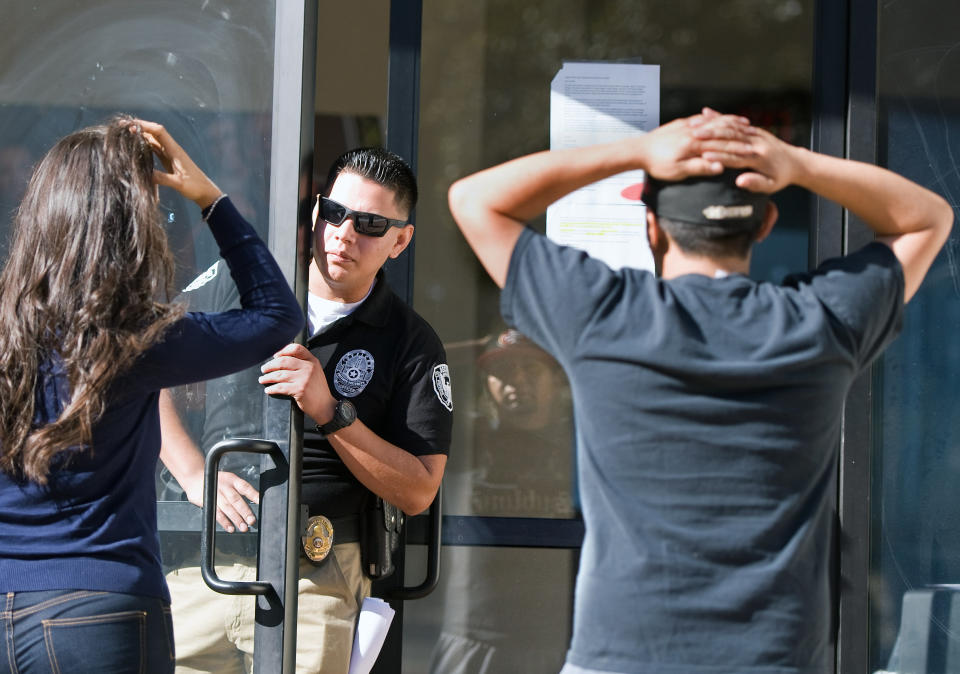
‘It's too good’: For-profit colleges are a well-oiled machine
Regulators periodically take action against predatory for-profit schools — federal authorities cracked down on ITT Technical and Corinthian Colleges in recent years and this week the House passed an amendment clamping down on for-profit colleges that target members of the military — and the enrollment for-profit schools has dropped from 1.1 million students in 2016 to 743,000 as of this year.
Nevertheless, there “is a demand” for-profit colleges, Stephanie Hall of The Century Foundation told Yahoo Finance. “There are students who want these degrees, and maybe they're not finding the opportunity in the nonprofit or the public sector.”
And the success comes from for-profit operations being very good at appealing to prospective students.
“The for-profit sector has presented itself as either more accessible, easier to enroll, the sector has definitely perfected the admissions process,” Hall said. “They are very good at quickly getting a student hop through an advertisement and immediately enrolled and receiving financial aid within a very short time period.”
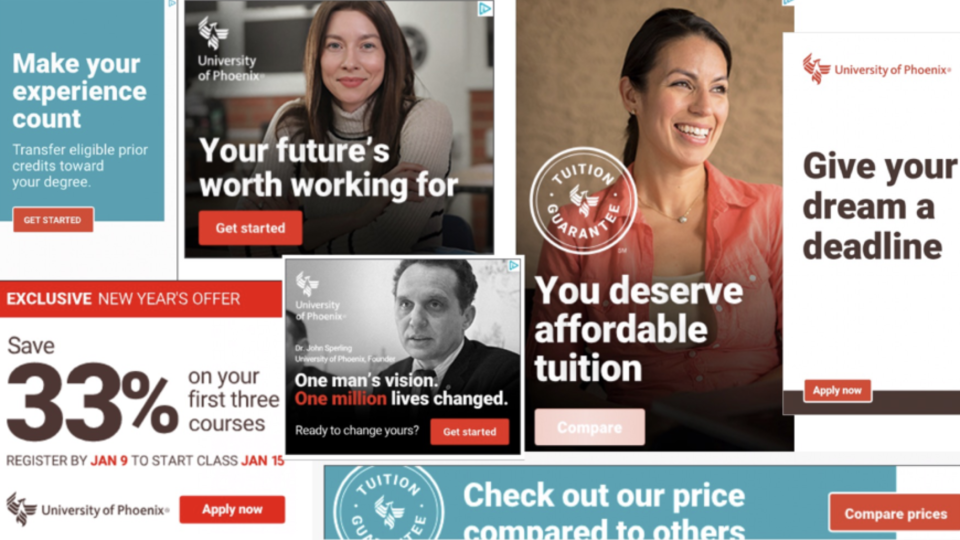
The advertising, specifically, is crucial to for-profit enrollment success.
“The University of Phoenix… has spent more than Apple Corporation… [on] advertising and some of the other promotional activities that they engage in,” Angulo alleged. “If you look at look at how much the industry spends on advertising collectively, it’s astronomical. And I would say that plays a big role in why these institutions still get enrollments.”
Sara Goldrick-Rab, professor of higher-education policy at Temple University, also singled out the University of Phoenix.
“What really bothers me about the University of Phoenix is their advertising,” Goldrick-Rab told Yahoo Finance. “They spend taxpayer dollars funding advertising during the Superbowl. You know how expensive that is? And when a regular person sees those, they fall for it. And I have a problem with that.”
One of the ads that aired in 2017 included an animated story about a struggling single mother who faces the threat of automation at her workplace, and turns to the University of Phoenix to turn the situation around.
“It's too good, it's too costly, and it's too risky,” said Goldrick-Rab. “And this has become an industry.”
For-profit colleges ‘spent a suspiciously low amount on instruction’
Hall, who recently published a report that looked at how much money schools spend on actual instruction, found that advertising reached an all-time high in 2016, at $1.65 billion. Online ads were the biggest component. The University of Phoenix in particular — between August 2016 and January 2017 — spent $27 million on them, pushing it up in online searches.
Current information on advertising money spent by University of Phoenix is difficult to find since the company was taken private in 2017. SEC filings show that fellow Arizona for-profit Grand Canyon Education (LOPE) also spent a similar amount — $35.5 million — on “marketing and communication expenses” in the first quarter of 2019, which it notes was a 24.3% increase from the previous year.
While the amount could be seen as a necessary expense for procuring new students, Hall argued that it revealed a conflict between money and education.
“While college admissions staff at nonprofit and public colleges see their role as providing students with information for them to compare their options and choose the college that best fits their interests and needs, the recruitment approach at growth-focused schools is frequently very different,” she wrote. “The admissions representatives are really more like salespeople, attempting to usher a prospect along from their web site click to enrolling, usually with federal grants and loans that eliminate the need to discuss the tuition price and how it might compare to other options.”

Hall’s research also found that large online institutions of all types “have spent a suspiciously low amount on instruction,” she said. “Those are worth further investigation to see where they might be overspending on advertising.”
One thing is clear: The ads work.
“Having run a general practice with emphasis on criminal and poverty law, I have been in contact with scores of people victimized by these ‘schools,’” Birmingham-based attorney Bill Dawson told Yahoo Finance. “Often well-meaning souls with no connection whatsoever with higher education were sucked in with the glossy ads which never mentioned the costs. Illusions of great jobs, careers.”
For-profit college students borrow more ...
The new DOE data looked at undergraduate enrollment data from 2015 to 2016 for students who went to private for-profit colleges and found that 85% took out a student loan to pay for their undergraduate education — compared to 69% who went to a private nonprofit college or 65% who went to a public institution.
Furthermore, borrowers who went to for-profit colleges took out an average loan amount of $43,600 — while those who attended private nonprofit colleges borrowed an average of $32,500 and those who went to public colleges borrowed an average of $27,000.
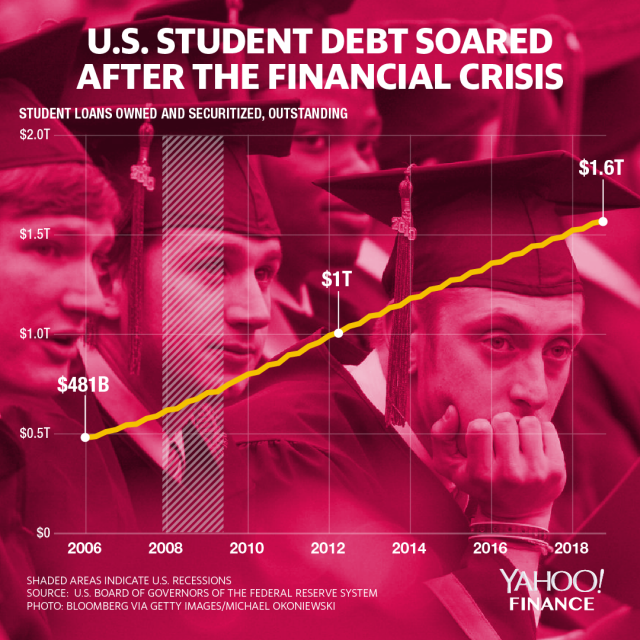
A new report by the New York Fed — which looked specifically at student loan balances and the way borrowers repaid their loans — also singled out for-profit colleges as the contributing factor for the student debt crisis.
It found that compared to public colleges, “the declines in repayment behavior were ... more prominent in such programs in private institutions” and that “the results suggest that the worsening of loan performance at private institutions in the past decade is to a significant extent attributable to student loans extended for study at for-profit institutions.”
... and for-profit college graduates earn less
In addition to the big student loan repayment burden, graduates of for-profit colleges also saw jobs and wages lag behind their counterparts.
DOE data showed that while 5.6% of overall graduates were still unemployed 1 year out of school, 8.8% of graduates from private for-profits were out of work — with a separate 10.4% out of the labor force entirely.
Furthermore, for many for-profit attendees who graduated during the Great Recession, the setback has been even more severe.
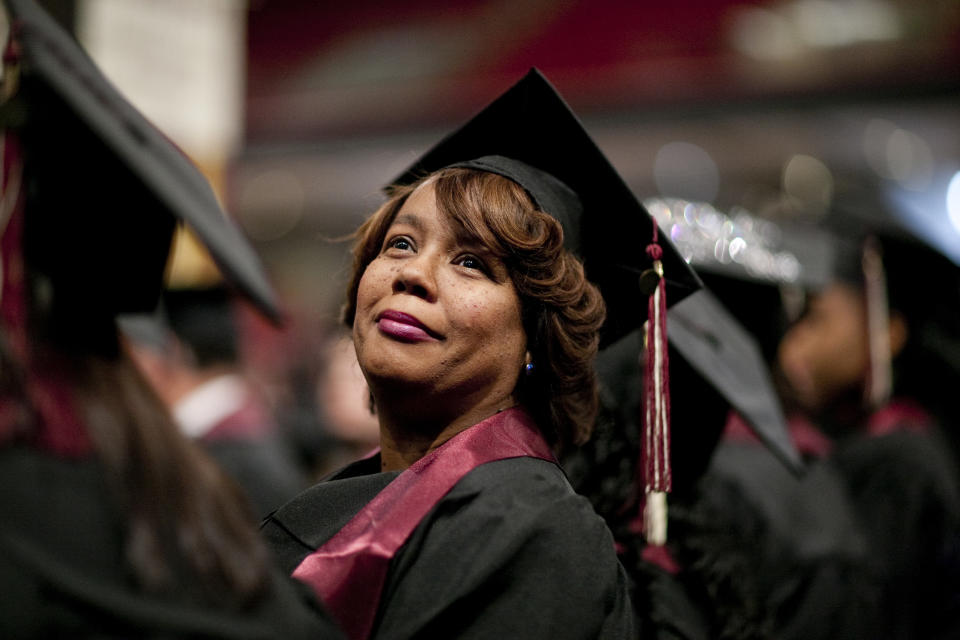
According to a report from the New York Fed that looked at the “Boom” period between 2003 and 2008 and the “Bust” period between 2009 and 2014, for-profit college students lagged behind those from nonprofit and public colleges.
For-profit graduates who entered the labor market during the bust period specifically faced “twice the earnings penalty… than what she would face if she entered the labor market in the Boom.” And since “for-profit colleges overwhelmingly cater to low income students and their enrollment share markedly increased in the last decade and a half… for-profit colleges increase inequality and impede economic mobility, even more so in the Bust.”
Consequently, these student loan borrowers are increasingly finding it hard to pay back those loans, with previous New York Fed data showing student loans going increasingly delinquent.
And according to a report from Brookings last year, the rate of defaults, particularly for for-profit colleges, has been intensifying. For-profit borrowers are defaulting at twice the rate of public two-year borrowers — 52% after 12 years — and nearly four times that of those attending public two-year courses.
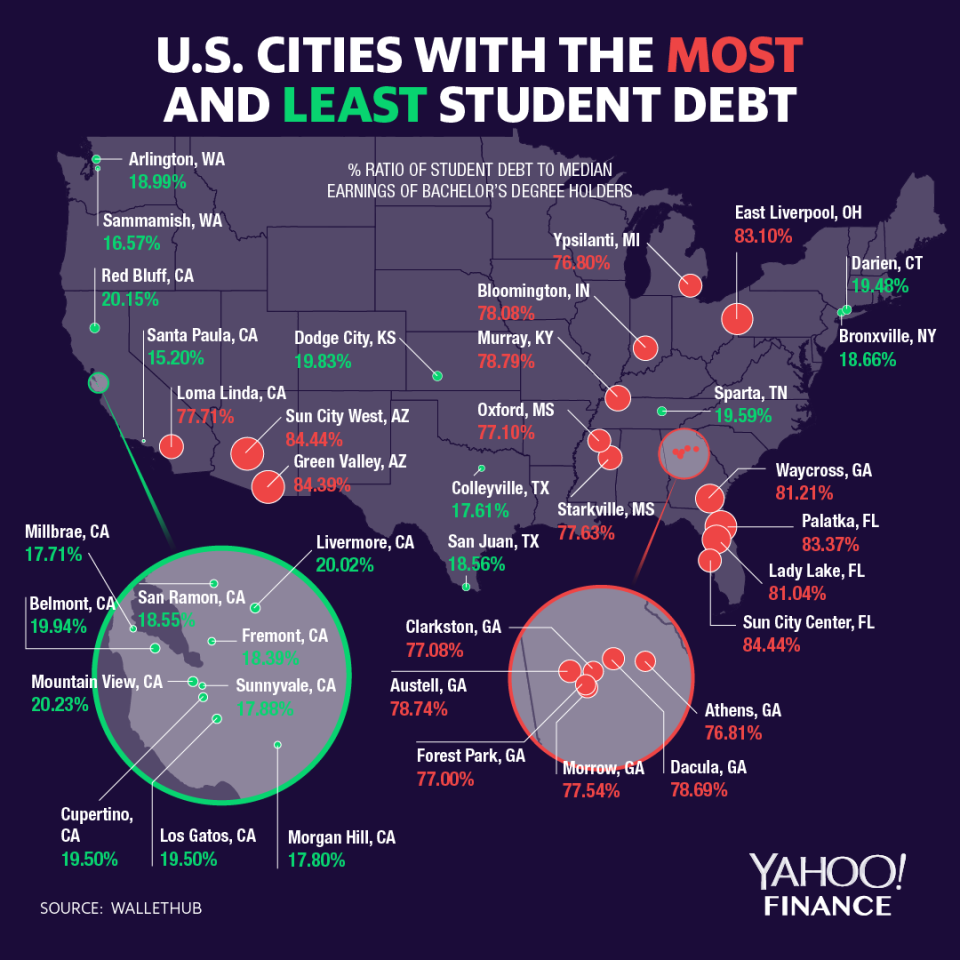
‘For-profit colleges are the big winners’
The problem continues today, and some efforts to improve the system are running into roadblocks.
Students filed nearly 24,000 federal fraud complaints against for-profit schools — including more than 3,600 against DeVry University and 1,100 against the University of Phoenix — between President Donald Trump’s inauguration on Jan. 20, 2017, and April 30 of 2018, according to Education Department documents obtained by The Associated Press.
But while the Obama administration tightened regulation on the for-profit college industry, the Trump administration has moved in the opposite direction.
Education Secretary Betsy DeVos repealed an Obama-era rule threatened to withhold access to federal financial aid if for-profit schools could not prove graduates could find gainful employment. The rule, which will now be repealed as of July 2020, would have also forced transparency related to for-profit advertisements and student debt.
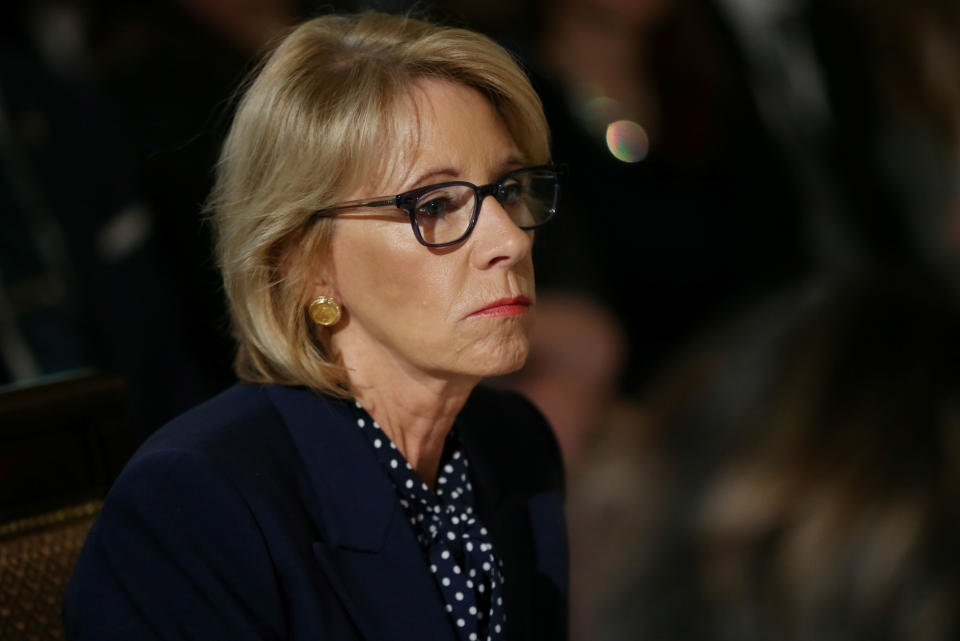
“They are opening the door to operators whose singular focus on gobbling up federal grants and loans for their investors will steer the business toward manipulative recruiting and poor quality training,” Bob Shireman, a senior fellow at the Century Foundation, told the New York Times.
The Eduction Department under Devos argued that their policies aimed to help students while also protecting for-profit colleges from any potential false accusations or targeting based on their tax status.
“For-profit colleges are the big winners,” Debbie Cochrane, vice president of The Institute for College Access and Success, told AP. “The department is much more receptive to their message.”
—
Aarthi is a writer for Yahoo Finance. Follow her on Twitter @aarthiswami.
Read more:
Presidential candidate Pete Buttigieg: ‘I have six-figure student debt’
Bernie Sanders unveils sweeping student debt cancellation plan
Over half of parents willing to go into debt to pay children’s college tuition
Household debt hits $13.6 trillion as student loan and credit card delinquencies rise
Elizabeth Warren unveils 'broad cancellation plan' for student debt
Read the latest financial and business news from Yahoo Finance
Follow Yahoo Finance on Twitter, Facebook, Instagram, Flipboard, SmartNews, LinkedIn, YouTube, and reddit.
